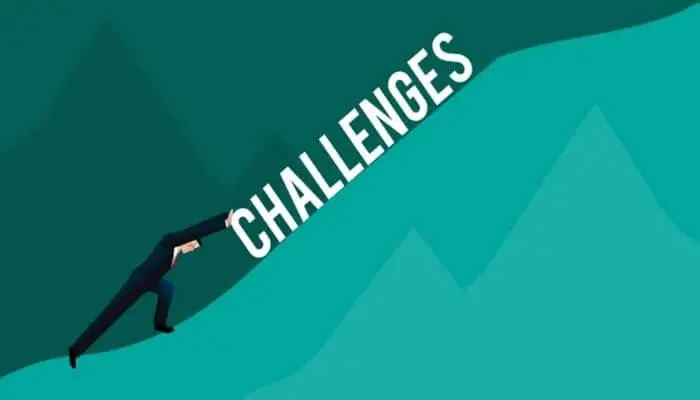Gathering Requirements as A Business Analyst (A Guide)
August 25, 2023 2023-08-28 1:27Gathering Requirements as A Business Analyst (A Guide)
In today’s ever-changing business landscape, the role of a Business Analyst is becoming increasingly vital.
One of the most crucial aspects of this role is gathering requirements, a task that often serves as the foundation for project success.
This comprehensive guide aims to demystify the art and science of “Gathering Requirements as a Business Analyst.”
As a Business Analyst, your ability to gather and document requirements is often directly linked to the success of any project.
Requirements are the guideposts that inform the direction, scope, and deliverables of a project.
They offer a roadmap for all stakeholders, including project managers, developers, and clients, to follow.
The Importance of Requirements Gathering

The significance of Gathering Requirements as A Business Analyst cannot be overstated.
In any project, requirements are the bedrock upon which all further activities are built.
This phase of the project helps establish the scope, allocate resources efficiently, and set timelines.
However, gathering requirements is not merely an administrative task; it is a specialized skill set that is integral to the role of a Business Analyst.
Requirements are crucial for several reasons. First, they provide clarity. Without well-defined requirements, projects can veer off course, timelines can get extended, and costs can spiral out of control.
Moreover, ambiguous or poorly defined requirements can result in the end product not meeting the stakeholders’ expectations or solving the initial problem, thereby deeming the project a failure.
Next, gathering requirements aids in setting project expectations for all stakeholders, including clients, team members, and organizational leaders.
A Business Analyst helps articulate these requirements in a manner that leaves no room for interpretation or ambiguity, ensuring everyone is on the same page.
This, in turn, aids in risk management, as the clearly defined scope helps identify potential pitfalls and challenges that may arise during the project, allowing for preemptive solutions.
In terms of budgeting and resource allocation, the importance of gathering requirements effectively is equally evident.
When the requirements are clear and comprehensive, budgeting for the project becomes a far simpler task.
Resources—be it human, material, or financial—can be allocated more precisely, ensuring that the project does not suffer from bottlenecks that could have been avoided.
Lastly, a well-executed requirement-gathering phase lays down a robust foundation for project planning and execution.
It allows for a more realistic and effective timeline, helping teams to stay focused and productive.
To sum up, Gathering Requirements As A Business Analyst is a multi-dimensional skill that goes beyond merely listing what a project needs.
It involves communication, negotiation, documentation, and a deep understanding of both the business problem at hand and the project management process, making it a cornerstone of successful project delivery.
Types of Requirements

Generally, there are three types of requirements that a Business Analyst needs to gather:
Certainly, let’s break down the content into the different types of requirements: functional, non-functional, business, and transitional requirements.
Functional Requirements:
Functional requirements outline specific operations and functions that a system must perform.
These details are integral to how the system operates and interacts with users and other systems.
They include actions, data manipulation, and system responses.
For instance, in a Customer Relationship Management (CRM) software:
Functional Requirement:
The system should allow users to create new customer profiles with fields for name, contact information, and purchase history.
Functional Requirement: The system should provide a search functionality that allows users to find customer profiles based on various parameters.
Non-Functional Requirements:
Non-functional requirements define the quality attributes and performance characteristics of the system.
They focus on aspects beyond what the system does, considering how it performs under various conditions.
For example, on an e-commerce website:
Non-Functional Requirement: The website should load product pages within 2 seconds under normal traffic conditions.
Non-Functional Requirement: The website should be able to handle a minimum of 1000 concurrent users during peak shopping hours without degradation in performance.
Business Requirements:
Business requirements align the project with the overall goals and objectives of the organization.
They provide a high-level view of what the project aims to achieve from a business perspective.
In a supply chain optimization project:
Business Requirement: The project should reduce overall inventory costs by 20% within the next fiscal year.
Business Requirement: The project should increase order fulfillment accuracy to 99% to enhance customer satisfaction.
Transitional Requirements:
Transitional requirements cover aspects related to the transition from the current state to the future state defined by the project.
These include data migration, training, and change management.
In a software upgrade project:
Transitional Requirement: All existing customer data must be migrated seamlessly from the old system to the new system without any loss.
Transitional Requirement: A comprehensive training program should be designed and conducted for all employees to ensure a smooth transition to the upgraded system.
Effective requirement gathering involves capturing and documenting these different types of requirements to ensure a comprehensive understanding of the project’s scope, purpose, and expected outcomes.
Each type of requirement serves a specific purpose in guiding the project’s development, assessing its performance, and aligning it with the organization’s strategic objectives.
Techniques for Gathering Requirements
Gathering requirements is a cornerstone of successful project management, and for a Business Analyst, it’s a skill that can make or break a project’s outcome.
The following techniques provide a comprehensive toolkit for effective requirement gathering:
Interviews: Unveiling Detailed Insights
One-on-one interviews remain a tried-and-true method for gathering requirements.
They provide a platform for business analysts to engage with stakeholders directly, allowing for in-depth discussions about project needs, objectives, and pain points.
This technique is especially beneficial when dealing with complex or sensitive requirements that require nuanced understanding.
Imagine a scenario where a company is revamping its employee performance evaluation system.
Conducting interviews with HR managers, team leaders, and employees can uncover diverse perspectives.
These insights help the Business Analyst to identify common pain points and collaboratively define new system requirements that address these challenges.
Surveys/Questionnaires: Scaling Up Data Collection
For gathering requirements from a larger group of stakeholders, surveys and questionnaires prove invaluable.
This technique enables business analysts to reach a broader audience efficiently.
Online tools facilitate the creation and distribution of surveys, allowing participants to provide their input at their convenience.
In a scenario involving the enhancement of an online customer portal, distributing a survey to customers can yield insights into their preferences, needs, and pain points.
This information, collected from a wide spectrum of users, can shape requirements that cater to various customer segments.
Document Analysis: Leveraging Existing Resources
Examining existing documents, whether they are reports, user manuals, or process flowcharts, can be a goldmine for requirements.
By meticulously analyzing these resources, business analysts can pinpoint areas that require improvement or identify gaps that need to be addressed in the new solution.
Consider a case where a company is upgrading its financial management software.
By thoroughly reviewing the current user manual and documenting user feedback, the Business Analyst can identify specific pain points users encounter.
This analysis can lead to targeted requirements aimed at enhancing the user experience and system efficiency.
Observation: Seeing Requirements in Action
Observing end-users interact with the current system can provide direct insights into what works well and what needs improvement. This technique allows business analysts to witness user behaviour and pain points firsthand, providing context that informs requirement gathering.
For instance, in a retail environment implementing a new inventory management system, and observing store employees navigate the current system can reveal inefficiencies and bottlenecks.
These observations guide the Business Analyst in creating requirements that streamline workflows and improve user productivity.
Workshops: Collaborative Requirement Definition
Workshops offer a dynamic and collaborative environment for requirement gathering.
They bring together stakeholders with diverse perspectives, allowing for real-time discussions and brainstorming sessions.
Workshops are particularly useful for defining complex requirements that require input from various departments.
Imagine an organization developing a new project management software. A workshop involving project managers, team leads, and IT specialists can delve into detailed requirements for features like task tracking, reporting, and team collaboration.
The collaborative nature of workshops ensures that the diverse needs of stakeholders are captured comprehensively.
In the realm of requirement gathering, utilizing a combination of these techniques tailored to the project’s context can yield comprehensive and accurate requirements.
Each technique brings a unique perspective to the table, enriching the understanding of project needs and objectives.
For Business Analysts, mastering these techniques equips them to gather requirements effectively, ensuring projects are launched with clarity, precision, and success.
Real-world Case Studies

Case Study 1: Revolutionizing Patient Records in Healthcare
In the ever-evolving healthcare sector, efficient data management is paramount. When a prominent healthcare provider aimed to transition from paper-based patient records to a digital system, a Business Analyst was at the forefront of the requirement-gathering process.
The Business Analyst’s first task was to collect functional requirements. These encompassed the precise data points needed for patient profiles, diagnosis histories, treatment plans, and prescription records.
A nuanced understanding of medical terminologies was crucial to accurately translating healthcare processes into technical requirements.
Non-functional requirements were equally significant. Given the sensitivity of patient data, data security emerged as a paramount concern.
The Business Analyst collaborated with cybersecurity experts to outline encryption protocols, access controls, and disaster recovery mechanisms.
Additionally, performance requirements were set to ensure swift access to patient records, even during peak usage.
By meticulously gathering both functional and non-functional requirements, the Business Analyst laid the foundation for a digital patient records system that streamlined operations, enhanced patient care, and adhered to stringent security protocols.
Case Study 2: Crafting Seamless E-commerce Experience
In the bustling realm of e-commerce, delivering a seamless user experience is essential for success.
When an e-commerce giant embarked on a project to revamp its online platform, a skilled Business Analyst played a pivotal role in deciphering the requirements.
The Business Analyst engaged in extensive stakeholder interviews to gather functional requirements.
These encompassed a user-friendly interface, efficient product categorization, intuitive search functionalities, and a streamlined checkout process.
Each requirement was meticulously documented to ensure clarity during the development phase.
Non-functional requirements were just as critical. The system’s scalability was a concern, considering the platform’s massive user base.
The Business Analyst worked closely with IT architects to define performance benchmarks and system response times to ensure a seamless shopping experience, even during peak traffic.
Security also took center stage. Non-functional requirements stipulated rigorous security measures to safeguard user data, protect financial transactions, and prevent unauthorized access.
By deciphering both functional and non-functional requirements, the Business Analyst paved the way for an e-commerce platform that resonated with users, offered unmatched shopping convenience, and operated with rock-solid security measures.
These case studies underline the pivotal role of Business Analysts in requirement gathering.
They bridge the gap between business goals and technical solutions, ensuring that systems align with stakeholder needs, adhere to industry standards, and drive business success.
The art of gathering requirements is more than a skill; it’s a strategic endeavour that propels projects towards impactful outcomes.
Challenges in Requirement Gathering

Despite its importance, the process of gathering requirements is fraught with challenges:
Ambiguity
The most common challenge is ambiguity. Requirements need to be as clear and detailed as possible to avoid confusion.
Communication Gaps
Different stakeholders often have different understandings of terms and requirements, making effective communication crucial.
Change Management
Requirements can change mid-project, requiring a solid strategy for documenting and communicating these changes.
Conclusion
The art of Gathering Requirements as a Business Analyst is multi-faceted, involving a variety of skills, techniques, and tools. In this dynamic business world, mastering this art is not just a skill but a necessity.
From defining the scope of work to ensuring the project’s success, effective requirement gathering is the cornerstone upon which viable solutions are built.
Whether you’re an aspiring Business Analyst or a seasoned professional looking to hone your skills, understanding the complexity and importance of requirement gathering is crucial for career development and project success.
So, next time you embark on a project, remember that the key to its success often starts with you, the Business Analyst, and your ability to effectively gather requirements.




